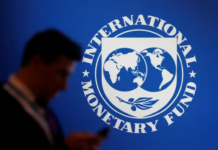Three parallel safety pacts spurred by the death of more than 1,100 people in the April collapse of a garment factory in Bangladesh have tentatively agreed on common standards for plant inspections in the country.
Experts from the three groups—the Accord on Fire and Safety in Bangladesh, which is led by mostly European retailers; the Alliance for Bangladesh Worker Safety, led by Wal-Mart Stores Inc. WMT -0.66% and Gap Inc. GPS -0.77% ; and the government’s own National Tripartite Action Plan—reached the deal last week.
It would see the groups adopt unified standards to simplify inspections and avoid duplication, officials with the three programs said.
The agreement, which still needs final approval from each group’s steering committee, could be a significant breakthrough in international efforts to raise standards in Bangladesh’s garment industry, according to Srinivas Reddy, country director of the International Labor Organization, which helped broker the deal.
“It was vital to agree on a coordinated approach toward safety standards and inspection methodologies to avoid multiple inspections of the same factories and to ensure that the same basic standards are applied,” Mr. Reddy told The Wall Street Journal.
Scott Nova, executive director of the Worker Rights Consortium, was skeptical about the impact, however. While “a strong, common standard” would be “an important and useful tool,” duplication of effort wasn’t the major concern in Bangladesh, he said.
“The reason the industry inspection programs of the last 10 years failed is not that they duplicated effort or that they lacked a common standard,” he said. “They failed because they were not carried out by competent safety engineers, were not independent or transparent, and involved no willingness by the brands and retailers to fund necessary factory renovations.”
The document was worked by a committee of experts from all three groups. It sets out guidelines for structural, fire and electrical safety that all parties pledged to accept.
The document, reviewed by The Wall Street Journal, addresses many of the problems that recurred during previous factory disasters.
Among other things, it mandates that factory inspections must be carried out by at least two qualified inspectors with a minimum experience of five years each and a combined experience of at least 20 years.
It details a “load map” that sets out the maximum number of machines allowed in a floor area. It also requires factories to install fire doors to prevent smoke entering stairwells in case of a fire, and prescribes a maximum distance of 25 meters (about 82 feet) between exits. Some details are still being fine-tuned, officials said.
“Our standards are now largely aligned,” Jeffrey Krilla, president of the Alliance for Bangladesh Worker Safety, said in a telephone interview. “Harmonizing safety standards was a critical step in ensuring that Bangladeshi factories are safer.”
The collapse of the Rana Plaza factory complex outside the Bangladesh capital Dhaka in April and a number of fatal factory fires shined a harsh light on poor safety standards and working conditions in parts of Bangladesh’s $20 billion garment industry, which supplies many major Western stores.
Retailers responded by signing two separate pacts to invest in factory safety in Bangladesh.
About 100 mostly European brands, including Hennes & Mauritz HM-B.SK +0.37% AB, Zara parent Inditex SA, ITX.MC -0.30% and Primark, signed a five-year legally binding accord that requires members to maintain order levels in Bangladesh for at least the first two years and to share the cost of factory upgrades.
Some two dozen American companies led by Wal-Mart and Gap have signed a nonbinding pact, which also has pledged to invest in factory inspections and upgrades.
The European accord is inspecting more than 1,600 factories while the U.S. alliance is covering roughly 600 factories that supply its members. Bangladesh has around 5,000 garment factories, according to the national garment manufacturers’ association.
The government has pledged to assess and upgrade around 1,200 factories not covered by the private pacts. The inspection program, called the National Tripartite Action Plan, is supported by the ILO and funded by the Dutch and British governments under a $24.2 million grant announced last month.
But from the beginning, differing standards and approaches complicated efforts to determine which factories in Bangladesh were safe. Factory owners were worried that the parallel initiatives would mean multiple audits and unnecessary bureaucracy for factories.
It has been common for retailers to order independent audits themselves. But safety standards often clashed, resulting in confusion.
In July, several Western retailers including Tesco TSCO.LN -1.20% and Primark pulled out of the Liberty Fashion Wear Ltd. factory in the Savar suburb of Dhaka, after inspectors working for the retailers deemed the building to be structurally unsafe. But the factory owner refused to close the factory for repairs, citing a different assessment by government-approved inspectors.
Primark said in a statement at the time that the company had “no alternative but to terminate its relationship with this supplier with immediate effect” after the management of Liberty “failed to evacuate the premises.”
Mehedi Ahmed Ansari, a professor at the Bangladesh University of Engineering and Technology who has led the government’s inspection initiative, said a key provision in the new agreement was the formation of a review panel that would take a second look at factory closures within 48 hours.
“A review will prevent the kind of confusion we saw in cases like Liberty Fashions,” he said.
Reached over the telephone last week, Mozammel Huq, the managing director of Liberty Fashion, said the retailers had unfairly ordered him to close the facility and welcomed the move toward a common standard.
“Different demands from different buyers create a problem for the factories,” he said. “If there is a common standard, we will know what to do.”
Source: wsj










